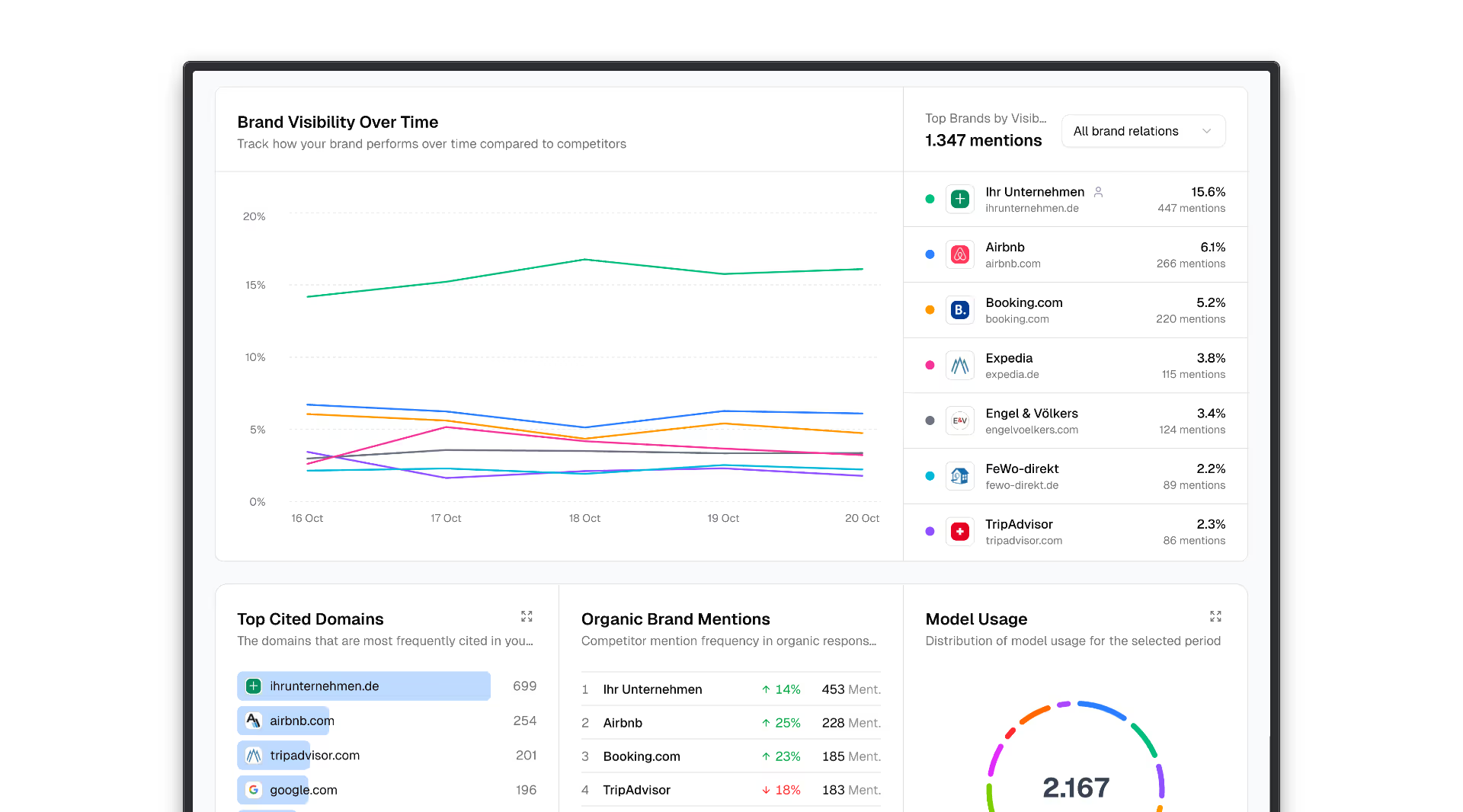Core Web Vitals: The most important indicators for load time & user experience
What are Core Web Vitals?
The Core Web Vitals are three metrics that Google has introduced to evaluate the user experience of a website:
- LCP (Largest Contentful Paint): measures the load time of the largest visible element.
- FID (First Input Delay): measures the time between first click/tap and reaction.
- CLS (Cumulative Layout Shift): measures the visual stability of a page.
Why are they important?
Google uses Core Web Vitals as a ranking signal. A page that loads quickly and reacts stably is preferred — not only in classic SEO, but also for perception by AI search systems.
How can you improve them?
- Optimize images and videos (size, format, lazy loading)
- Use caching and content delivery networks (CDNs)
- Reduce JavaScript or load asynchronously
- Optimize fonts (preload, fallbacks)
Core Web Vitals step-by-step guide
How to improve your Core Web Vitals
- Measure load times
→ Use tools such as Google PageSpeed Insights or Lighthouseto test LCP, FID, and CLS. - Optimize images
→ Compress images, use modern formats (e.g. WebP) and use lazy loading. - Reduce JavaScript
→ Remove unnecessary scripts or load them asynchronously to speed up interactivity - Optimize fonts
→ Load web fonts via preload and define fallbacks so that layouts remain stable.
How do you test Core Web Vitals?
Core Web Vitals can be checked using free tools from Google. The easiest way to do this is with PageSpeed Insights. There you will receive a detailed analysis for desktop and mobile — including specific suggestions for improvement.
More tools:
- Google Lighthouse (integrated with Chrome DevTools)
- Search Console (Core Web Vitals reports for all sites)
- Web Vitals Extension for Chrome
- GTmetrix
This allows you to regularly check whether your optimizations are having an effect.
TL; DR
Core Web Vitals measure load time, interactivity, and stability. They are crucial for SEO, user experience and visibility in Google & AI search.
